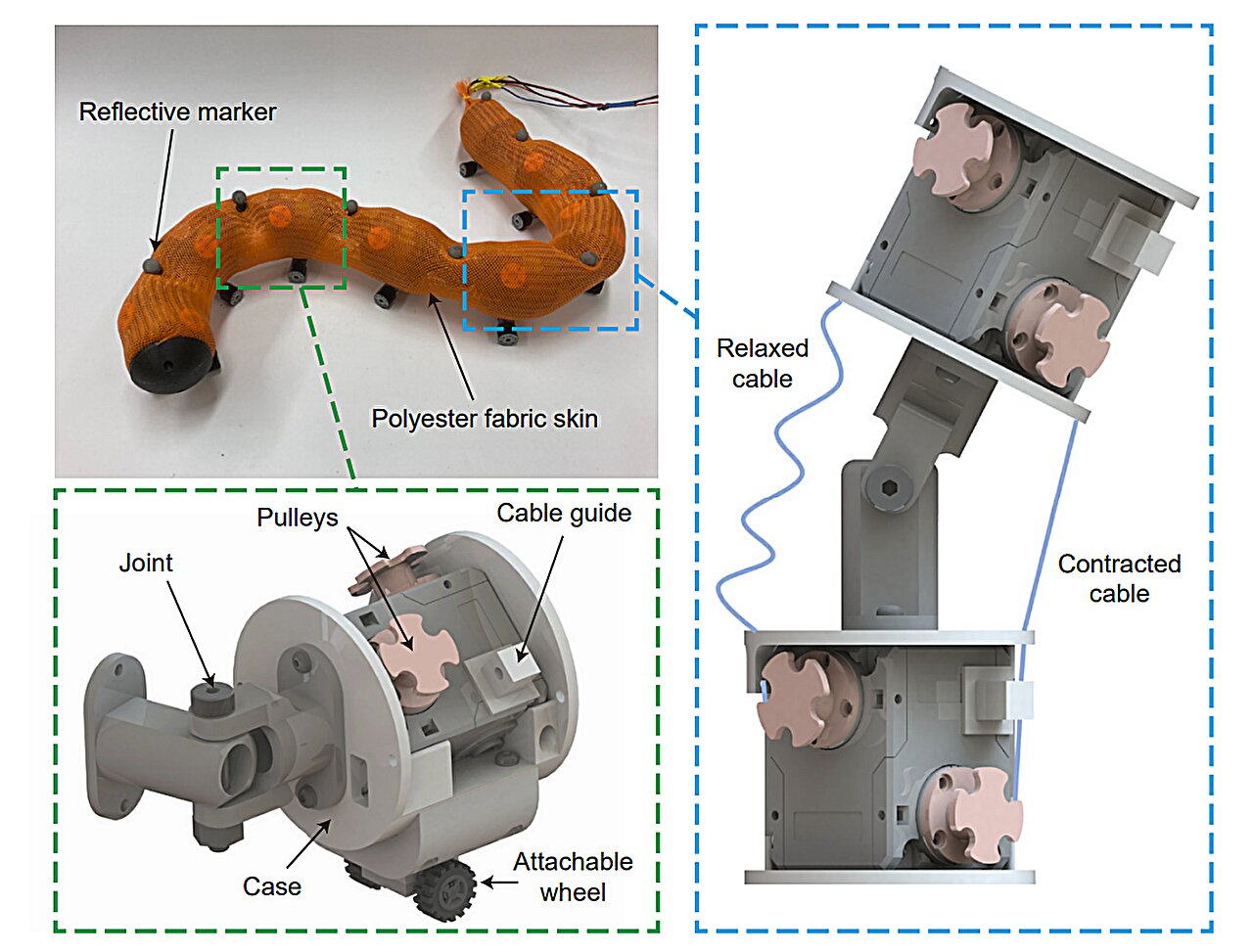
Wormlike, limbless robots that navigate obstacle courses could be used for search and rescue one day

Scientists have been trying to build snakelike, limbless robots for decades. These robots could come in handy in search-and-rescue situations, where they could navigate collapsed buildings to find and assist survivors.
With slender, flexible bodies, limbless robots could readily move through confined and cluttered spaces such as debris fields, where walking or wheeled robots and human rescuers tend to fail.
However, even the most advanced limbless robots have not come close to moving with the agility and versatility of worms and snakes in difficult terrain. Even the tiny nematode worm Caenorhabditis elegans, which has a relatively simple nervous system, can navigate through difficult physical environments.
As part of a team of roboticists and physicists, we wanted to explore this discrepancy in performance. But instead of looking to neuroscience for an answer, we turned to biomechanics.
We set out to build a robot model that drove its body using a mechanism similar to how worms and snakes power their movement.
Undulators and mechanical intelligence
Over thousands of years, organisms have evolved intricate nervous systems that allow them to sense their physical surroundings, process this information and execute precise body movements to navigate around obstacles.
In robotics, engineers design algorithms that take in information from sensors on the robot's body—a type of robotic nervous system—and use that information to decide how to move. These algorithms and systems are usually complex.
Our team wanted to figure out a way to simplify these systems by highlighting mechanically controlled approaches to dealing with obstacles that don't require sensors or computation. To do that, we turned to examples from biology.
Animals don't rely solely on their neurons—brain cells and peripheral nerves—to control movement. They also use the physical properties of their body—for example, the elasticity of their muscles—to help them react to their environment spontaneously, before their neurons even have a chance to respond.
While computational systems are governed by the laws of mathematics, mechanical systems are governed by physics. To achieve the same task, scientists can either design an algorithm or carefully design a physical system.
For example, limbless robots and animals move through the world by bending sections of their body left and right, a type of movement called undulation. If they collide with an obstacle, they have to turn away and go around it by bending more to one side than the other.
Scientists could achieve this with a robot by attaching sensors to its head or body. They could then design an algorithm that tells the robot to turn away or wind around the obstacle when it "feels" a large enough force on its head or body.
Alternatively, scientists could carefully select the robot's materials and the arrangement and strength of its motors so that collisions would spontaneously produce a body shape that led to a turn. This robot would have what scientists call "mechanical intelligence."
More information: Tianyu Wang et al, Mechanical intelligence simplifies control in terrestrial limbless locomotion, Science Robotics (2023). DOI: 10.1126/scirobotics.adi2243
This article is republished from The Conversation under a Creative Commons license. Read the original article.![]()
Citation: Wormlike, limbless robots that navigate obstacle courses could be used for search and rescue one day (2024, February 14) retrieved 14 February 2024 from https://techxplore.com/news/2024-02-wormlike-limbless-robots-obstacle-courses.html
This document is subject to copyright. Apart from any fair dealing for the purpose of private study or research, no part may be reproduced without the written permission. The content is provided for information purposes only.